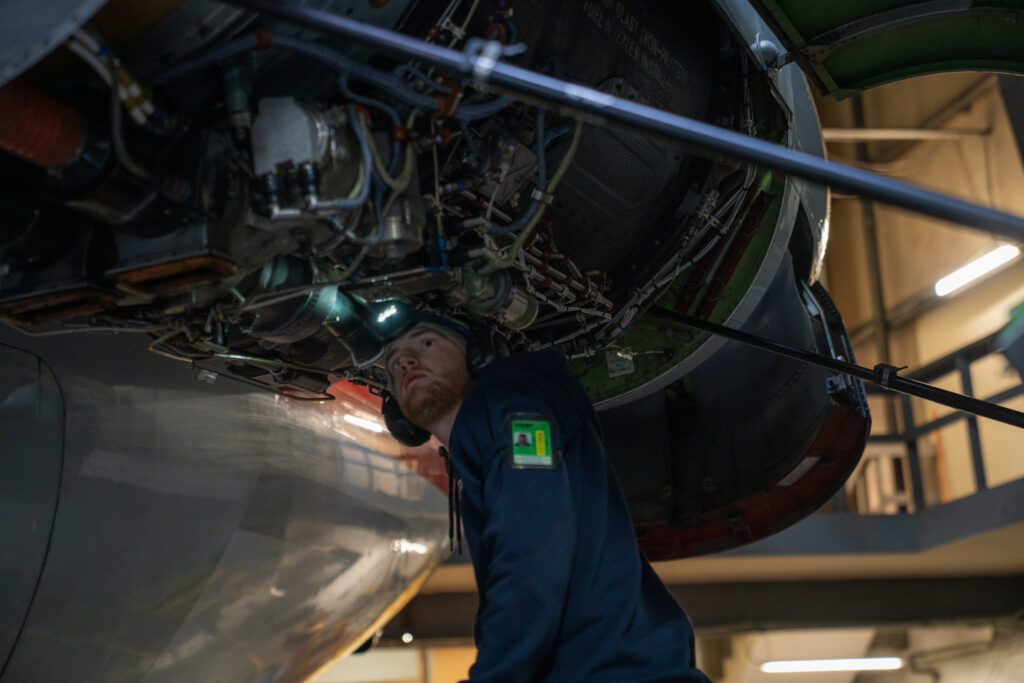Built to Last: The Precision Behind Piedmont Airlines’ Maintenance

On average, commercial aircraft are replaced every 22.8 years.
This means aircraft maintenance is essential to support growth and stability across the aviation industry. For the last nine years, Piedmont Airlines has flown a fleet of Embraer 145 (E145) aircraft that our maintenance teams, pilots, and operational staff have learned every aspect of from nose to tail.
All 115 of Piedmont Airlines’ E145s were assembled at Embraer’s Production facility in San Jose dos Campos, Brazil. There are 70 currently flying on the line and 45 in storage across our seven maintenance bases on the east coast and Jet Yard, an airplane storage facility for commercial aircraft near Tucson, Arizona. The age and fatigue of our aircraft are measured in lifecycles, one cycle equaling one take-off, and the number of hours the aircraft has been airborne. Every aircraft is different, and factors such as how the landing gear is built or the weight of the aircraft affect its lifecycle.
When do aircraft parts need to be replaced?
“The whole gear on the E145 is limited to 60,000 cycles, but the engines themselves do not have a cycle limit as a whole,” said Engine Programs Manager, Jon Watson. “What limits the engines is internal rotating parts and condition monitoring of the engine’s performance. The airframe is under constant inspections that are driven by cycles, hours and/or calendar time, but there is really no lifecycle on the 145 of how long it can fly as long as the aircraft is maintained by a Federal Aviation Administration (FAA) approved program.”
What about engine lifecycles?
Our engines are leased by Rolls Royce, and most repairs are done by our vendor Standard Aero Alliance (SAA) in Maryville, Tennessee. Key internal components of the engine include low pressure turbine wheels, high pressure turbine wheels, spacers, and shafts, all ranging from 20,000 to 35,000 lifecycle limits. Once these limits are reached, or parts are damaged, they are sent to SAA to be replaced.
“There are many reasons why we would do an engine change: excess oil consumption, engine failures, or bird strike situations. But most of the time we are making engine changes because the internal components are at their life limit,” said Watson.
What happens to engines that can’t be repaired?
If there is a repair that is too extensive and not economically feasible, an airline can make the decision to donate the engine to a maintenance school for training the next generation of aviation maintenance technicians. On September 17, 2025, Piedmont Airlines donated an E145 regional jet and two Rolls-Royce jet engines to the University of Maryland Eastern Shore to support the launch of its FAA Part 147 Certified Aviation Maintenance Technician School.
Our team is our legacy.
This means our maintenance teams, pilots, and operational staff don’t just maintain our aircraft, they sustain them. As some of the best aviation professionals in the industry, our team ensures every plane remains airworthy and every flight is safe. By managing engine lifecycles and optimizing performance, we guarantee our fleet’s reliability, our customers’ peace of mind, and our commitment to the future of aviation.
Interested in learning more about Piedmont Airlines and our commitment to operational excellence? Watch this video of our maintenance team completing an engine change below: